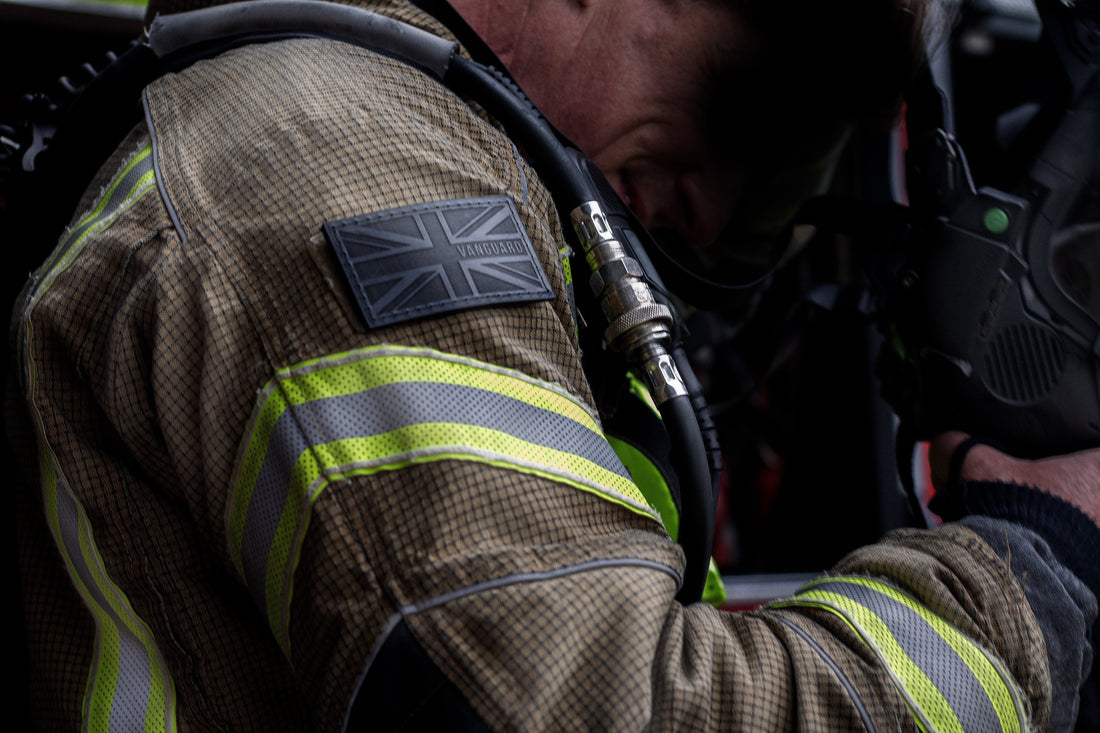As tactical athletes, firefighters need physical conditioning that’s not only robust, but role-specific. So it's no surprise the question often comes up; should I train in my fire kit to improve operational performance?
At first glance, the answer seems obvious—train how you operate.
But when we look more closely at the impact on performance adaptation, and, importantly, long-term health and exposure to contaminants, the picture becomes more complex.
The Allure of Specificity
The principle of specificity is well established in sport science: your body adapts to the demands placed upon it. Firefighting is hugely demanding both physiologically and psychologically, combining high-output physical work under extreme conditions—heat, imposed loads, limited visibility, restricted movement and emotional stress.
Kit-based training does offer some benefits here:
-
It improves familiarity with the weight, restriction, and heat of operational wear.
-
It enhances movement competency in kit-specific tasks like ladder work, casualty extrications, or stair climbs.
-
It can build psychological resilience when conducted in high-stress scenarios.
But the keyword here is scenario. The benefits of training in kit are clearest when the goal is to replicate operational conditions—simulating the job, not replacing structured training.
The Performance Trade-Off
Let’s be clear: fire kit (or bunker gear for our American cousins) is Personal Protective Equipment that allows the wearer to perform their role in hazardous environments; it is not designed for physical training. It’s bulky, thermally insulated, and restrictive. These features, whilst protective on the fireground, actively compromise training quality.
When used for ‘specific’ physical training the benefits of this specificity need to be balanced against:
1. Excessive Fatigue and Injury Risk
Fire kit adds significant weight and thermal load. Training under these additional stressors, especially with compromised movement patterns, can increase the risk of overuse injuries, heat-related illness, or acute musculoskeletal strain—particularly if not appropriately programmed or monitored (Rayson, Wilkinson & Carter, 1999). Additionally, when conducted on shift, accumulated fatigue has the potential to negatively impact immediate operational readiness.
2. Reduced Training Quality
There’s a difference between training to improve a quality (e.g., strength, power, aerobic capacity) and testing your capacity to cope with job-related stressors.
Training in kit often results in slower movement, reduced range of motion, poorer mechanics, and limited load. On top of this the thermal strain elevates heart rate and core temperature quickly, forcing premature fatigue and reducing the duration or intensity of work possible.
All this means training adaptation suffers—particularly for strength, power, and VO₂ Max.
3. Thermal Strain and Hydration
Even in temperate environments, fire kit impairs thermoregulation. Unsurprisingly studies show core temperature rises faster in encapsulated PPE, with significant dehydration risk if hydration strategies aren't addressed (Barr et al., 2010). Heat stress also affects cognitive function, decision-making, and motor control—all of which could undermine training safety and performance.
In short, training in fire kit is less about building physical capacity and more about testing it under stress. That distinction matters.
The Hidden Cost: Contaminant Exposure
Perhaps more importantly, there is growing concern about the cumulative health impact of unnecessary exposure to fire kit.
Fire contaminants—including polycyclic aromatic hydrocarbons (PAHs), and volatile organic compounds (VOCs)—are increasingly linked to elevated cancer risks among firefighters (LeMasters et al., 2006; Stec et al., 2018). Even “clean” kit can carry legacy contamination, and absorption rates increase when the skin is hot and sweating —exactly the conditions present during intense physical training. (Fent et al., 2014).
Wearing fire kit while exercising raises skin temperature and opens dermal pathways. The likelihood of absorbing residual toxins—particularly from older or insufficiently cleaned kit—is significant, even without active fireground exposure. It’s an unnecessary risk, particularly when there are better ways to develop role-specific conditioning.
Specificity Done Right: Train Like You Operate
If we truly value specificity, then our approach should be smarter:
-
Use scenario-based operational training—BA wears, RTC extrications, ladder drills—as the fireground-specific “sport practice.”
-
Whilst it would be impractical and counterproductive for every training drill to be high-intensity and physically demanding, regularly incorporating scenarios that closely approach worst-case operational demands—both physically and mentally—can effectively test role-specific readiness. (This needs to be scheduled intelligently to ensure on-going operational readiness is not compromised.)
-
Keep physical conditioning separate—focus on strength, power, aerobic capacity, and muscular endurance using progressive, structured training out of kit to drive meaningful adaptations.
This way, we separate performance development from performance testing, keeping training focused and effective, whilst protecting long-term health.
Key Take-Away
Fire kit is a tool of the job, not a training aid. Whilst it has a place in scenario-based simulation and the testing of resolve and readiness, wearing it during regular fitness training is a poor trade-off—blunting performance adaptations and increasing exposure to harmful contaminants.
Build your strength and engine in sports kit in the gym. Periodically test it in fire kit on the drill yard, and ensure you are ready to perform on the day when you are needed most.
References
Barr, D., Gregson, W., Reilly, T. and Drust, B., 2010. The thermal ergonomics of firefighting reviewed. Applied Ergonomics, 41(1), pp.161–172.
Bompa, T.O. and Buzzichelli, C., 2019. Periodization: Theory and Methodology of Training. 6th ed. Champaign: Human Kinetics.
Fent, K.W. et al., 2014. Airborne contaminants during controlled residential fires. Journal of Occupational and Environmental Hygiene, 11(9), pp.585–592.
LeMasters, G.K. et al., 2006. Cancer risk among firefighters: A review and meta-analysis of 32 studies. Journal of Occupational and Environmental Medicine, 48(11), pp.1189–1202.
Rayson, M.P., Wilkinson, D.M. and Carter, J.M., 1999. The physical requirements of firefighter recruits and the validity of job-related tests used to assess their suitability for recruitment. Institute of Naval Medicine Report No. 99.18.
Stec, A.A. et al., 2018. Occupational exposure to carcinogens in firefighting: Systematic review and meta-analysis of exposure levels and biomarkers. Environment International, 118, pp.49–62.

